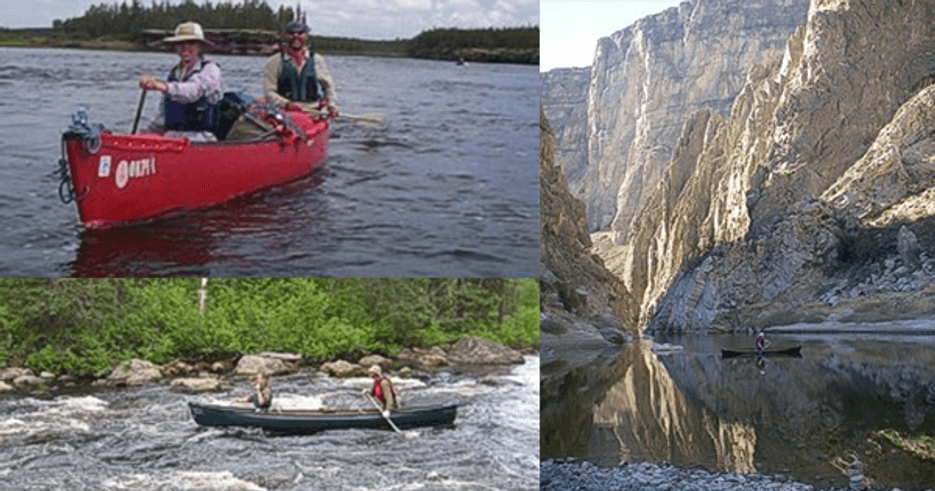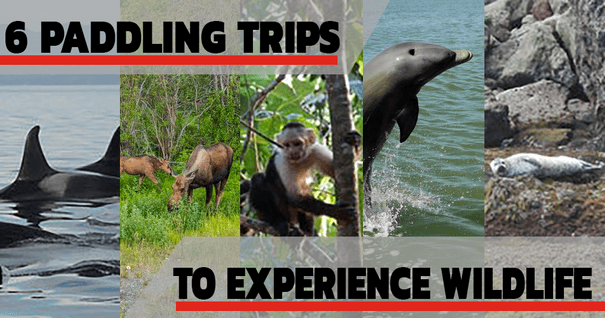8 Great Places to Paddle
When a reader asked me to share my favorite places to canoe, I balked. After all, one person's treasure is another's trash. I like my rivers brimming with wildlife and rapids. And the more remote, the better. But not everyone shares my love of adventure. Most paddlers prefer quiet, easy routes without death-defying rapids and troublesome bears. So, as a nod to all, I offer these eight routes. Some will keep your blood on boil; others rank just above a lazy float.
1. Hood River
Hood River, province of Nunavut, Canada. The Hood originates near the Arctic Circle and flows into Bathurst Inlet on the Arctic ocean-a distance of about 250 miles. You'll see muskox and caribou, grizzly bears and wolves, fox and wolverines. Along the route is Wilberforce Falls which drops 160 feet through a three mile canyon (by comparison, the U.S. Niagara drops 167 feet)-it's a day long portage. The rapids are big and intimidating-polished paddling skills are essential. Access and egress is by charter float plane-long and expensive flights.
2. The Fond du Lac River
The Fond du Lac River is located in the northwest corner of Saskatchewan, just below the Northwest Territories. The draw is trophy fishing, spectacular campsites-many of which are on sandy eskers that stretch for miles-easy rapids, generally good weather, short portages and few bugs. If you are comfortable in Class II rapids and have good camping and navigational skills you'll do fine on the Fond du Lac. Charter float plane in and out.
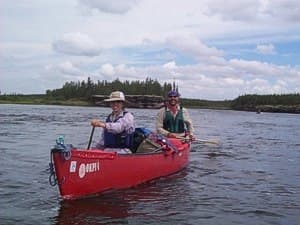
3. North Knife River
If you've ever wanted to canoe to Hudson Bay (what paddler hasn't?) the North Knife River (Manitoba) is the one to do. Begin your trip on North Knife Lake 160 miles from the Bay. From the river's mouth, arrange boat or air transportation to Churchill, 35 miles away. Warning: Canoeing the tidal flats to Churchill is very dangerous! Expect trophy fishing and polar bears (!). Bring a satellite phone and shotgun. Experienced paddlers only. The North Knife is "all river"-there are no lakes. Access is by float plane from Thompson, Manitoba; Return by train from Churchill.
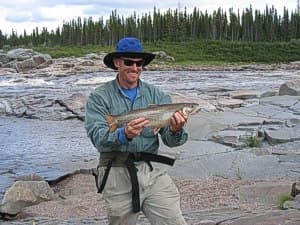
4. The Kopka River
The Kopka River is located 100 miles north of Thunder Bay, Ontario. Access by float plane (15 minute flight); egress by car (arrange a shuttle). The draw is the spectacular scenery and magnificant waterfalls (11 of them!) which are more characteristic of Alberta than Ontario. The Kopka is small and narrow, with excellent campsites and fishing. Most rapids rate Class II or less, though there are some dicey runs so good paddling skills and judgment are required. Portages are infrequent and generally easy.
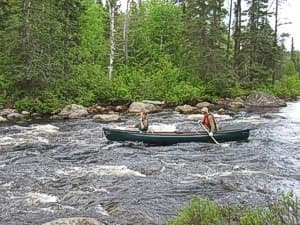
5. The Rio Grande River, Texas
The Rio Grande River, Texas is not like the pictures of it you've seen in western movies. The river flows through the Chisos mountains in Big Bend National Park. Huge hills and deep canyons abound. Camping and open fires are permitted anywhere (fire-pan required). There are a lot of rapids on the Rio Grande, some are huge! The canyons are awesome! Go in January when the water is low. You can drive to the put-in and take-out.
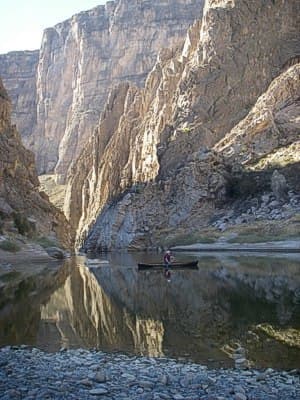
6. Buffalo River, Arkansas
Picture the river in the film "Deliverance" and delete all rapids above Class II. Add beautiful sandy beaches, spectacular vistas, clear, clean water and free-roaming elk. The Buffalo is a federally protected river and one of the few U.S. rivers that allow you to camp and build fires (no fire-pan required) where you please. There is no development along the route, which will be enjoyed by all skill levels.
7. The Boundary Waters Canoe Area
The Boundary Waters Canoe Area of Minnesota is a "must" experience for those who love wild places and the magic of canoes. Everyone-from highly experienced paddlers to those who've never been canoeing-love this area for it's beauty, solitude and remote feeling. About 750,000 people canoe the BWCA every year but the lakes rarely feel crowded. Navigating the myriad small lakes is the challenge-you must know how to read a map and compass.
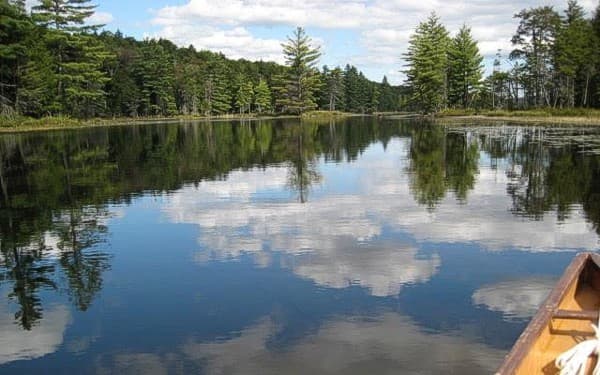
8. Noatak River, Alaska
Here's a remote, easy barrenlands river for those with limited whitewater skills. Expect spectacular scenery, easily canoeable rapids and no portages. The river flows through the Arctic National Wildlife Refuge (ANWR) so expect to see caribou, muskox, grizzlies and wolves. Access and egress is by charter airplane from Beetles or Cold Foot Alaska. Pilots won't carry hard-shelled canoes so you'll need a folding canoe or raft.
Cliff Jacobson is a professional canoe guide and outfitter for the Science Museum of Minnesota, a wilderness canoeing consultant, and the author of more than a dozen top-selling books on camping and canoeing.
Related Articles
I wasn't sure what travel was going to look like this winter, if there would be any travel at all.…
Even if the promise of travel seems to have gone awry, the pull towards a warm, tropical paddle…
View all Kayaking Locations in Lake Tahoe ► ► All of our Lake Tahoe paddling locations are from…
Experience wildlife with this handful of paddling trips. Dolphins and monkeys and bears, oh my! If you…
